St. Louis & Kansas City-Style Spare Ribs
Can’t decide between St. Louis or Kansas City-style ribs for your next gathering? Why not do both on your Shokunin Kamado following these simple recipes representing two different regions of BBQ?
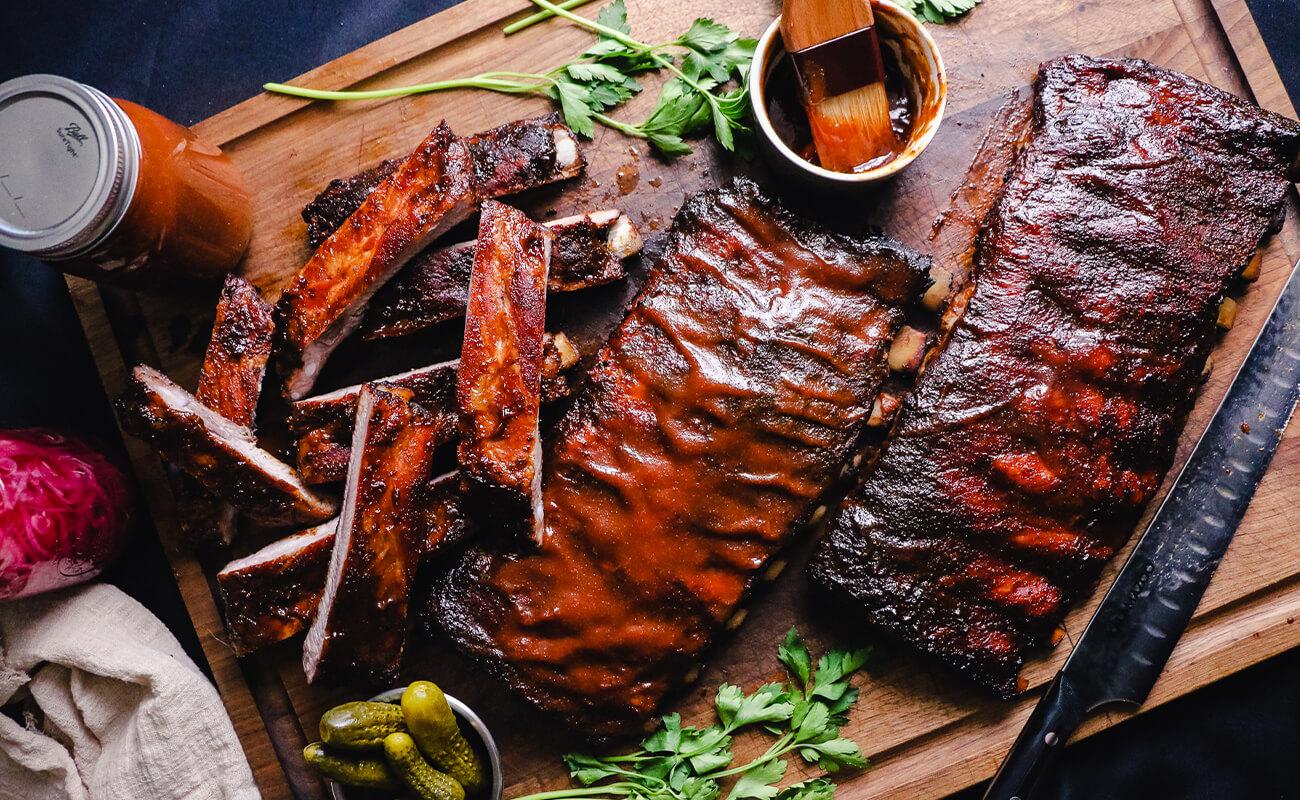.jpg?width=1300&height=800&ext=.jpg)
- 3-4 racks St. Louis cut pork spare ribs
- 4 cups of St Louis-Style Barbecue Sauce
- 4 cups of Kansas City-Style Barbecue Sauce
Rub Ingredients
- 1/2 cup brown sugar
- 1/3 cup paprika
- 1 tbsp kosher salt
- 1 tbsp garlic powder
- 1 tbsp onion powder
- 2 tsp chili powder
- 2 tsp black pepper
- 1 tsp dry mustard
The day before you start this cook, (if possible) make your sauces. You can make the sauce the same day as the ribs of course, but the flavors are better after the sauce has set for 24 hours.
For the ribs, start by setting your Shokunin up for low and slow cooking. Adjust your exhaust vent in order to maintain a cooker temperature of 255°F. For pork spare ribs I recommend a combination of hickory and apple wood chunks.
While your grill is coming up to temperature, trim your ribs. Trimming spare ribs is less labor-intensive than trimming a brisket, but requires slightly more labor than trimming a pork shoulder. You’ll notice a somewhat loose piece of meat on the back of the ribs, trim that off.
.jpg)
Clean up the edges of the ribs and square off any hanging pieces on the ends of the slabs. You’ll also notice a membrane on the back of the ribs. You definitely want to remove that, it won't render and will keep the flavor of the rub from penetrating into the meat. What’s worse, it’s tough and hard to chew. Simply grab a corner of the membrane with a paper towel and peel it off. It may come off in several pieces, don’t worry, just get as much off as you can.
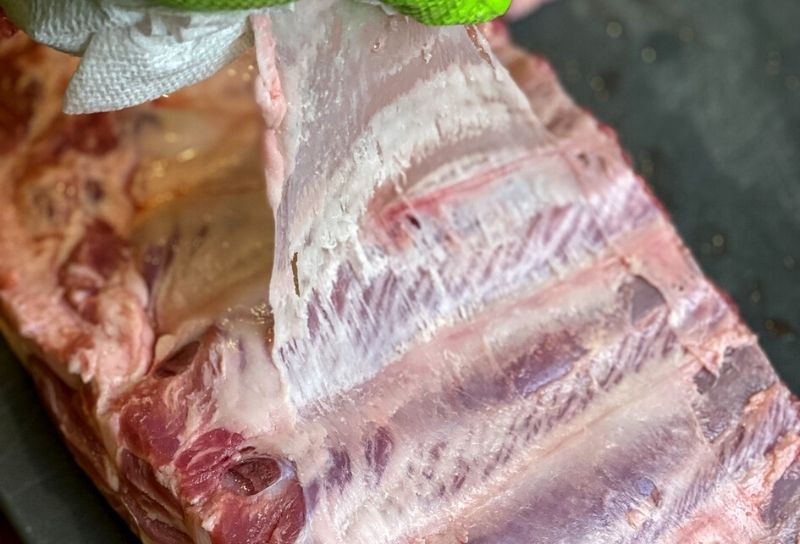.jpg)
Some racks require more trimming than others, resulting in different size slabs. Don’t be afraid to trim off the small bits at the end of a rack, they’ll overcook anyway and will just be a waste of rub. Save your trimmings though. They make great stock, or a fine addition to BBQ baked beans.
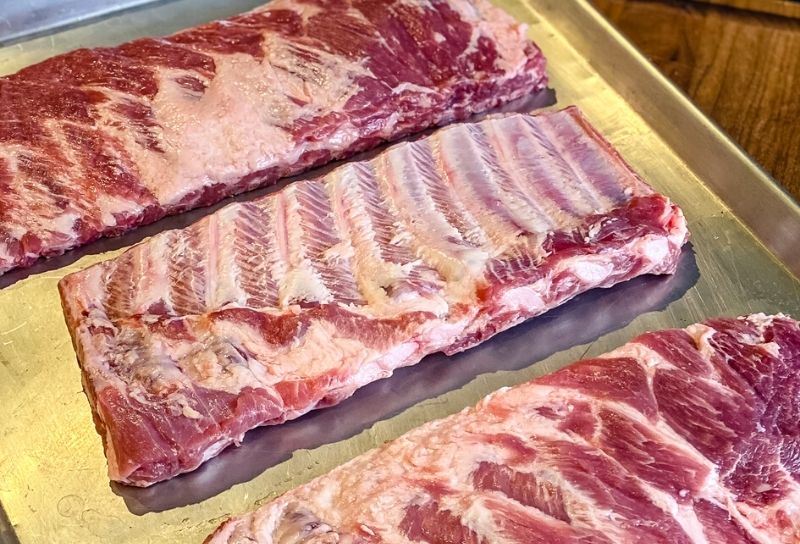.jpg)
With the ribs trimmed, it’s time to get them seasoned. The dry rub flavor profile is similar for both regions, so we’ll use the same rub for all the ribs. The difference in style between St Louis style and Kansas City style ribs comes from the sauce. This differs from the Memphis style ribs which are cooked and seasoned differently.
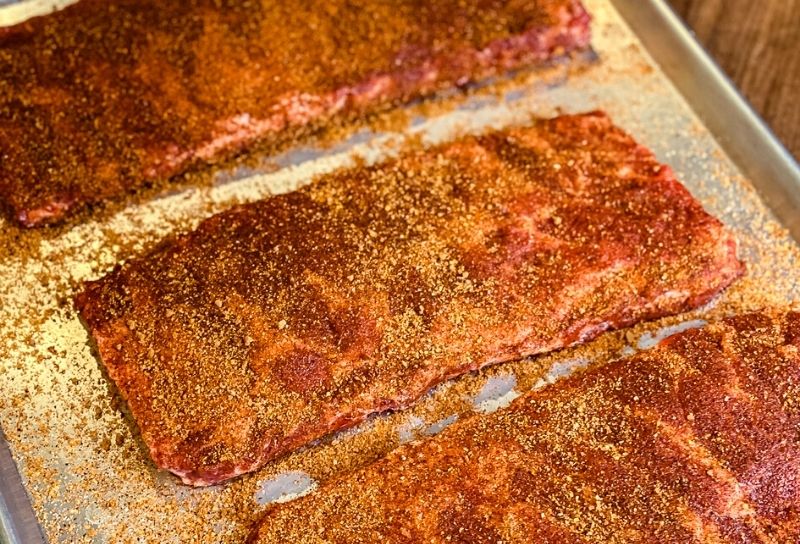.jpg)
In a shaker bottle, combine rub ingredients and shake well to mix. Season your ribs liberally starting with the bone side of the ribs, flipping them and then doing the meat side. This allows the meat side, or presentation side, to remain presentable after the rub is applied.
With the rub applied, and the temperature in the Shokunin stable at 255°F, place your ribs on the cooking grate and allow them to bathe in that beautiful hickory and apple smoke for 2.5 hours. This is where the Shokunin differs from just about every other cooker.
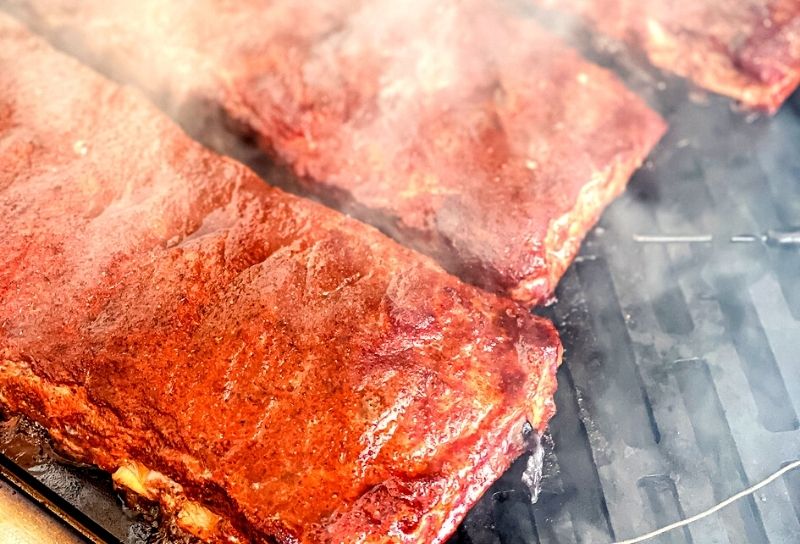.jpg)
There’s no need to open the grill every hour to spritz in order to ensure the ribs stay moist. Below are the ribs at 1 hour into the cook. I only opened the hood to demonstrate how moist the ribs still are.
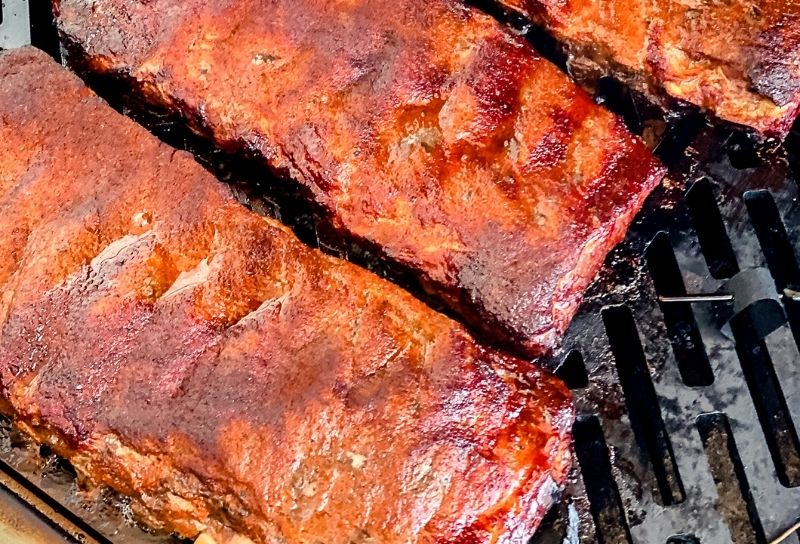.jpg)
After two and a half hours the ribs have taken on some delicious smoke and are starting to look beautiful. You’ll notice the bones are just barely starting to peek out, but the racks are still pretty firm. Now it’s time to get them tender. Pull the ribs off the grill and close the hood. Adjust the exhaust vent in order to increase grill temperature to 285°F.
While the grill is heating up, place each rack on a double layer of foil and top with a generous amount of warm sauce. Notice the difference in color for each sauce.
.png)
Wrap the foil tightly around the ribs and mark with a sharpie so you know which rack has which sauce. Return to the grill for 1 hour. After one hour the ribs should be just about done. Remove the ribs from the grill and unwrap.
Checking the internal temperature of the meat with a reliable meat thermometer should show an internal temperature of about 193°-195°F. You’ll notice now the bones for each rack are very prominent. This blog about checking ribs for doneness is also helpful.
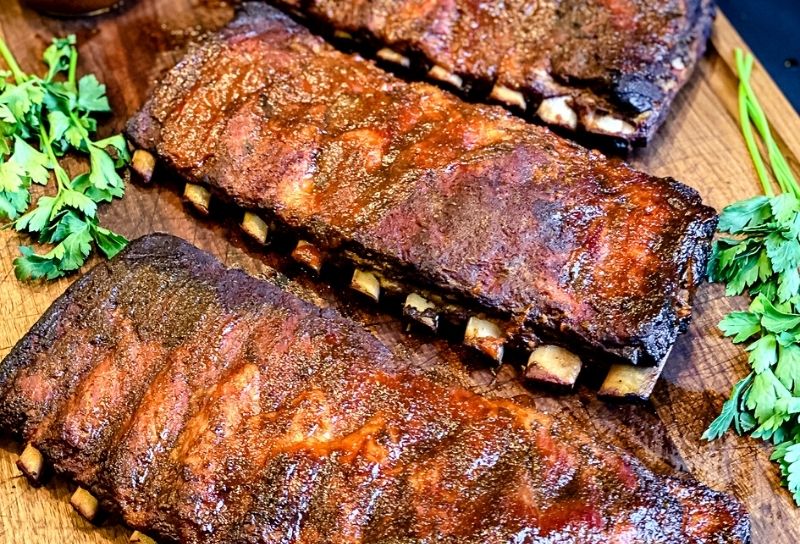.jpg)
Glaze each rack with an even layer of sauce and return to the cooker for 10 minutes. This allows the sauce to “set” and become very tacky. Remove ribs from cooker and allow them to rest for 10 minutes. Using a large slicing knife, slice into individual ribs and serve with your favorite BBQ sides.

